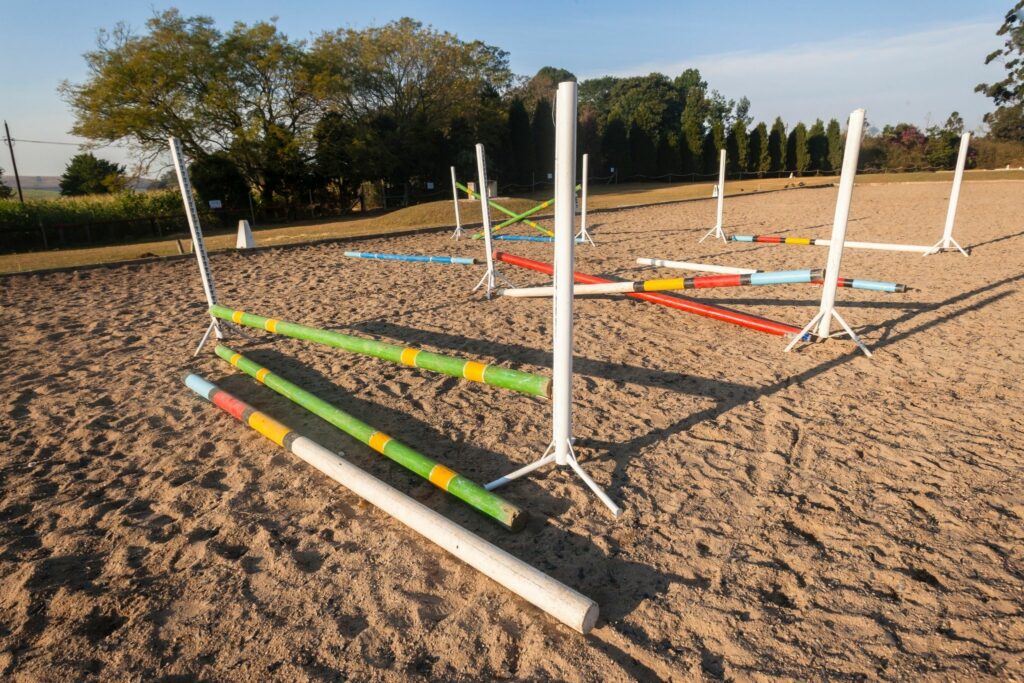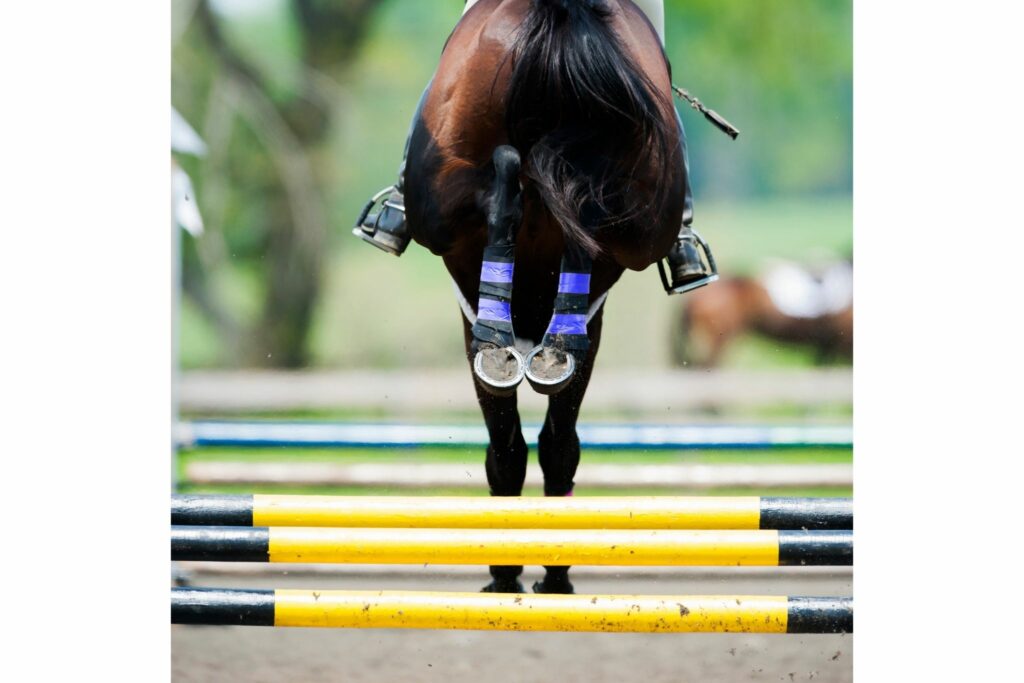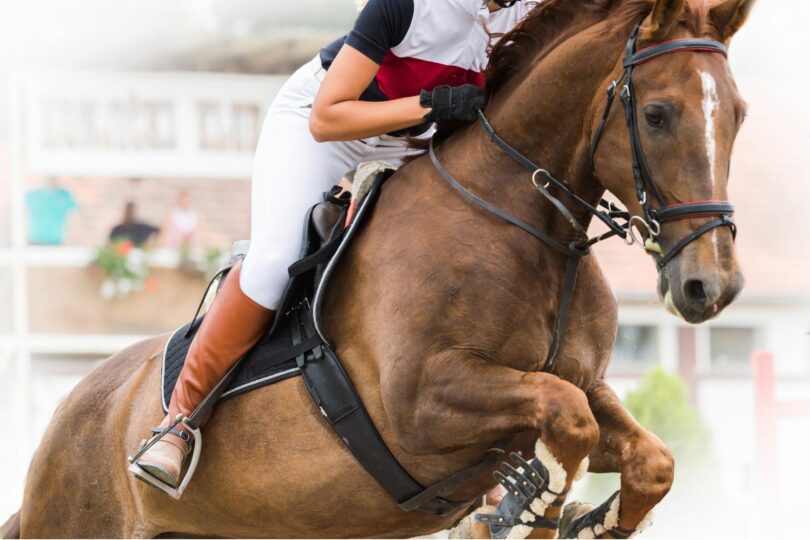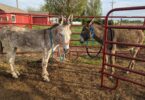Put a Bounce in Your Step!
Bounce jumps aren’t often found in the show ring, but you will definitely find them in the arena at home. They are a great tool for working on the fitness of both the horse and rider.
Knowing how to properly set up and walk a bounce jump is important for the safety of you and your horse. Understanding the mechanics of a bounce will help you prepare for the next time you are asked to ride through one.
The Bounce Jump
Every rider at my barn has an opinion about bounce jumps. I personally think they are a lot of fun, but I know a fellow adult ammy who dreads them and the gymnastic exercises they are so often associated with (e.g. gridwork).

Photo Cred: Canva
What is a bounce jump?
In the simplest terms, a bounce jump is a set of two jumps set so close together there is no stride between them. The horse will land with its front legs and then immediately take off with its hind legs.
It looks like the horse is ‘bouncing’ through the combination—hence the name.

Photo Cred: Canva
How do you walk a bounce?
To walk a bounce, you’ll need to walk the distance between the two jumps to measure it. Just like any other jump, use a large, 3’ stride and count your steps as you walk.
Four (human) 3’ steps equals 12’, or one (horse) stride. Since a bounce jump technically has zero horse strides between the fences, you’ll count off two steps, or 6’, for the landing, and two steps, or 6’, for the takeoff.
There should be a total distance of 12’, or four (human) steps between the two jumps. It’s that easy!
How do you jump a bounce?
The key is consistency. You need a consistent and energetic canter going into a bounce. If you are slow as molasses, you’re going to have a bad time. If you’re too fast and chasing your horse to the fence, you’re going to have a bad time.
If you start slow and then speed up at the approach or vice versa—again, bad times!
A steady, forward canter and straight approach will set you up for success! If all else fails, you can always enter a bounce at a trot.
At take-off, make sure you stay light in your seat with your weight in your heels. Follow the rhythm and give your horse a nice release—you’re gonna have a good time! Don’t forget to breathe!
On a personal note: When I first started jumping bounces, my trainer had me go into my two-point two strides prior to the jump. (This is because I have a nasty habit of thinking I can help my horse jump by physically throwing myself forward.) But it helped me learn how to count strides and take-off and, in time, I also quieted that bad habit.
I would recommend you begin with ground poles and then work up to a cavelletti and then a cross-rail. When setting your distances, you should aim for a distance between the jumps of 10 and 12 feet.
The range is important because although the average horse stride is 12 feet—it is just an average.
It may take some adjustment! Since a horse is landing and then immediately taking off, you want to make sure you have the spacing correct. The neat thing about a bounce cavaletti and cross-rail is that you can jump it in both directions, which is highly encouraged!
Why practice bounce jumps?
Bounces have a variety of uses and it all boils down to athleticism. A bounce jump can help a horse with a lazy front end pick up (aka snap) its feet up. It can also help engage a horse’s back end as a horse must rock back and push off to get over the next jump.
There can be no super-man-style jumps in a bounce!

Photo Cred: Canva
For the rider, it allows them to work on their own core strength, as you must stay light in the saddle in two-point (also called half-seat).
It is also a great conditioning exercise and teaches muscle memory because your position must be in the right spot (not behind or ahead) to maintain balance.
For me, as a rider, I love them because it reminds me to just *stop* overthinking sometimes. You can’t micromanage a bounce jump. You just have to ride it.
Parting Thoughts
If you have never jumped a bounce before, don’t try it by yourself for the first time. Talk to your trainer and ask about doing a bounce in your lesson. Setting up and then walking a bounce jump is a great way to perfect your stride counting for future course walks!
P.S. Enjoy this article? Trot on over to:
- 10 Best Stirrups for Jumping Clear (And Staying Safe)
- Jump Jargon: A Simple Guide to Horse Jumping Terms
- Compositi Stirrups Review: I’ve Never Jumped Better
- 100+ Things to Pack for a Jumping Horse Show (Checklist)
- When can (and should) you start jumping a horse?
- 4-Star Favorites: The 4 Best Cross Country Stirrups
- Horse Riding for Older Adults: Why It’s Never Too Late
- How Often to Replace Horseback Riding Helmets








